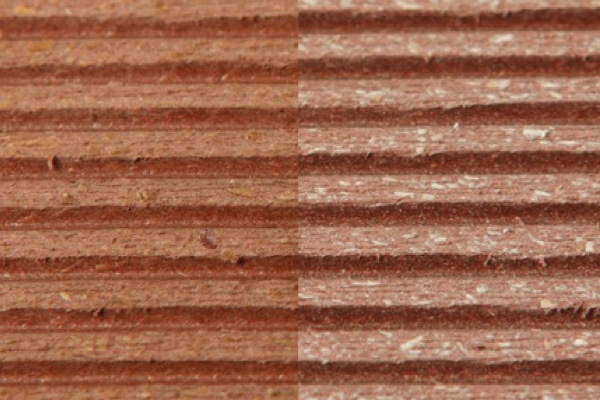ABOUT WPC
WPC decking characteristics and comparison with wooden decking
As a construction material, WPC flooring is a strong, moisture-resistant compound designed to withstand all kinds of adverse weather conditions, including rain, blowing, salt, sand and heavy human traffic. The surface looks good even with minimal maintenance due to the natural wood look. Individually, both plastic and wood fibers have different disadvantages. For example, pure plastic expands and contracts with temperature fluctuations more than wood. However, it is most likely that the wood fibers will absorb more water, become covered with mold or mildew and become stained as a result of heavy rains and adverse weather conditions. By combining wood with plastic, it is possible to eliminate all the mentioned disadvantages and offer customers a better product than a classic wooden terrace board, at the same time without losing anything instead. This is especially important in the climatic conditions of Latvia, where there are many freeze-thaw cycles every year, which significantly damage the wood.
It is a safe, nature-friendly alternative to traditional wooden or plastic floor coverings, railings and fences, which allows you to save in the long term, because the life of ordinary wooden boards is very short – in order to keep them in good visual condition for several years, various chemical protection agents must be used regularly. The service life of WPC terrace boards is at least 25 years without annual chemical maintenance. Cleaning can be done by simply rinsing them with a high-pressure water jet.
WPC terrace elements do not need to be painted, because the color effect is provided by color pigment additives, which are mixed in the production process, thus coloring the profile in the entire mass, not only in the outer layer.
| Feature | Terrace made of wooden boards | Terrace from WPC boards |
|---|---|---|
| Usage time | 3-7 years | 25 years and more |
| Maintenance | Regular maintenance is required – oiling, painting and restoration. | No maintenance required. Requires minimal care – should be cleaned from time to time. |
| Effect of weather conditions | Absorbs moisture. Swells, deforms. Rot if not treated properly. Can be eaten by pests – worms, termites. Cracks and scratches form. |
Long-term resistance to the effects of the atmosphere. Pests do not throw because they lack food. Insensitivity to moisture. Does not crack, does not form scabs. The wet surface is almost non-slip. |
| Fastness of color tone. | Under the influence of UV rays, the surface becomes gray over time. | High color tone stability. |
| Aesthetics | The boards show screw heads. | The boards are fixed with inconspicuous fasteners. The hollow profile can be used to insert an electric wire for floor lighting. |
| Impact on the surrounding environment | To create 100 m2 terrace, approximately 14 trees must be cut down. If tropical wood is used, negative CO is produced2 balance is formed. | No trees are cut down, as the origin of the wood is shavings from carpentry. The boards are recyclable. |
The most suitable wooden terrace boards for the conditions of Latvia, which ensure a relatively acceptable operational quality, are Siberian Larch and Thermally treated pine terrace boards, however, each of them has its own drawbacks. When larch grows naturally, it is very full of resin, which ensures its longevity, however, these same resins prevent the larch from being fully processed and protecting its surface from the effects of external elements. After two years, the larch will inevitably lose its color and remain gray, the quality of the surface will also decrease with the appearance of scabs. In addition, since it is a living material, there is a risk of the larch boards bending and trying to tear off the fasteners. On the other hand, for heat-treated pine decking boards, it is critical to ensure that the surface is impregnated with oil. It is recommended to oil the boards twice a year, but even this does not completely prevent the appearance of small cracks.
WPC terrace boards are the most suitable terrace covering for Latvia’s climate in the long term, which does not require regular maintenance.


